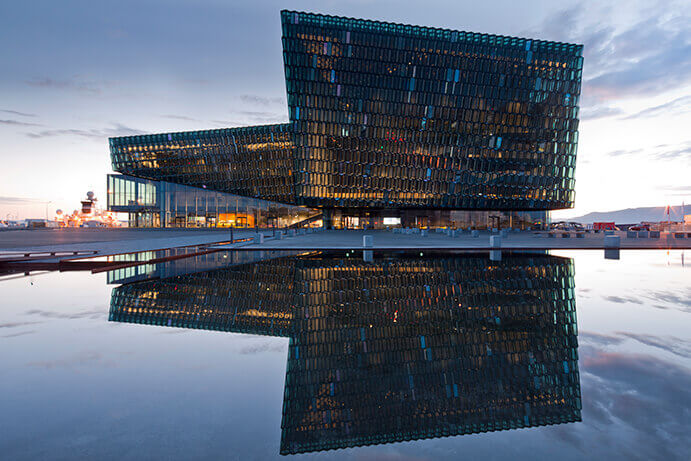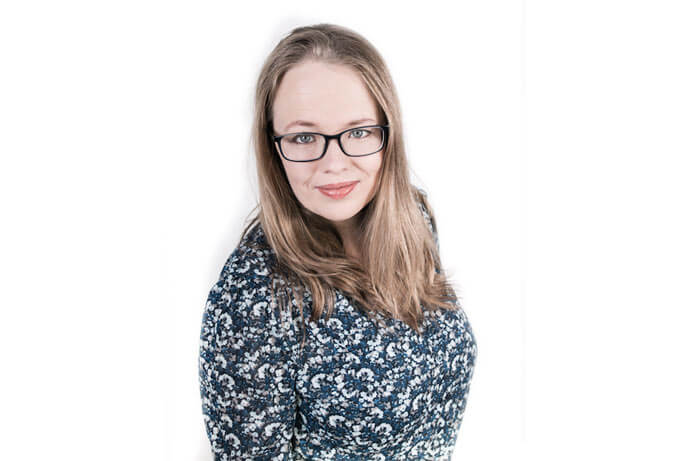Dark Music Days is one of the oldest music festivals that takes place annually in Reykjavík, Iceland, ever since it was initiated by the Society of Icelandic Composers in 1980. Artistic Director Þórunn Gréta Sigurðardóttir, who is also currently the Chairman of the Society of Icelandic Composers, is a composer who has studied piano performance, music theory, and composition at Reykjavík College of Music, the Iceland Academy of The Arts, and composition at the Hochschule für Musik und Theater in Hamburg, Germany. Her works have been featured in festivals in Iceland, Denmark, Norway, Germany, and New Zealand, and she has produced numerous radio programs for the National Broadcast Service in Iceland. As her own multimedia works can attest, the 2016 Dark Music Days Festival promises to shed light on and to reinforce concepts of composition which embrace not only sonic phenomena, but the visual, physical, and kinesthetic dimensions that represent the totality of performance.
Dark Music Days is one of the longest running festivals in Iceland, and there seems to be a long tradition of not only providing a platform for Icelandic composers of contemporary music but also of nurturing and enabling them to stretch the boundaries and to push towards new sonic realities. What are your goals for the 2016 season of Dark Music Days, as Artistic Director?
Foremost, I put emphasis on a variable programme with as many premiers of new music as possible. This year, there are no less than 35 premiers on the programme. The lack of women in the contemporary music scene is a fact that has to be changed, so I decided to put women in the front line as much as possible. Unfortunately, we are far from having as many female composers as male composers, but more female performers we have. There will be six solo recitals of female soloists this year. Besides that, there is a concert by two women ensembles, Nordic Affect and Ensemble Elektra and the women’s choir Vox Feminae.
As a composer, as well as Chairman of the Society of Icelandic Composers, can you name or describe maybe some stylistic features or common themes that you observe which embody the domain of the Icelandic composer’s musical realm? Are there certain preoccupations or ideas that someone who is not from Iceland might not initially be aware of in this music?
I think in general, Icelandic musicians are quite innovative and open to making all kinds of experiments. Also, one of the advantages of the small community, in my opinion, is that it’s hard to specialize in one field, so most musicians are used to working in a very variable environment. It is not uncommon that the same musician is touring with a pop band one day and the next he’s writing his own music for a specially designed, home-built instrument or programming an animated music score for goose flutes. An orchestra player might be playing modern jazz at a club tonight and so on. This makes different ideas and exchanges of experiences flow freely between genres, making the edges between them blurry.
Also, in the previous years, there has been a lot going on in the alternative field in the contemporary music scene in Iceland. A collective of composers have been making experiments on how to re-approach notation and making innovative sound researches by designing and building instruments. It is also interesting to see how much of an active and ongoing collaboration between performers and composers is to be found in Iceland. This shows that there are many performers in Iceland interested in new music and are enthusiastic about new music performance. There seems to be a new wave of interest for crossover art worldwide, especially for contemporary music theatre, and this is a development we see in Iceland, too. Last year, there were at least three premiers of contemporary operas of Icelandic Composers, Anna Thorvaldsdottir, Atli Ingolfsson, and Karolina Eiriksdottir, all being produced abroad. Fortunately, Karolina’s opera, Magnus Maria, made it to the Reykjavík Art Festival, in my opinion one of the highlights in Icelandic music life in 2015. So this wave certainly got to Icelandic artists, but unfortunately, Icelandic audiences have little access to the fruits these bigger productions bear.
Can you describe the significance of video art in your work? How important is video to you when you are conceptualizing a piece of music, or when presenting new works to an audience?
I would say performance is particularly important to me– conceptualizing a piece and video art is one media that can be a part of that. And if so, I take it in the conceptual work from the beginning. I think of composing a piece as composing an event, so to say, where everything that the piece is bringing on stage is a part of the big picture. This might be a video, the body of a performer, instruments, note stands, speakers, cables, or what ever. I have in mind that some musical aspects do create tension in the body of the performer, for example, and for me it is interesting to work with that in the musical context, too.

Harpa designed by the Danish firm Henning Larsen Architects in co-operation with Danish-Icelandic artist Olafur Eliasson.
Myrkir Músíkdagar (Dark Music Days) seems to be appropriately named as it takes place in the darkest time of the year in Iceland where there is little sunlight throughout each day. Yet, the spectacular concert venue where most of the concerts will take place, Harpa Reykjavík Concert Hall, acts as a beacon of light and illumination during this dark time. What sort of opportunities does this space provide?
I certainly hope Dark Music Days will brighten up the darkest time of the year here in Reykjavík with its variable programme. Getting to know something new that makes you eager to seek for more is a very enlightening and refreshing experience. I also hope the festival will lead to an active dialogue between artists and building bridges between the contemporary music scene and the audience. Organizing the festival, we were aware of the importance of the social aspect, so there will be a festival bar at the restaurant Smurstöðin in Harpa with special offers to ticket holders, where we encourage both participants and audience to get together, discuss what they have seen and heard, and exchange ideas.
Surely there is a strange beauty to the combinations of this darkness in the environment and the adventurous, energetic community driving the festival itself. What would you say to someone who is undecided about attending this festival? What are some reasons for why they should attend, and what else can they look forward to experiencing in Iceland?
Dark Music Days is one of the best chances you have to get a profile of the scene of contemporary music in Iceland. We collaborate with many established ensembles, such as the Icelandic Symphony Orchestra, Reykjavík Chamber Orchestra, and Caput ensemble, but also we seek to be in an active dialogue with the alternative field. There are two concerts on the programme with electronic music, two installations, along with various chamber concerts, a choir concert, and solo recitals. The composers presented at the festival are from 25-90 years old and of both genders, so the programme should give a nice overview of the scene of contemporary music in Iceland in context with other contemporary music.
Through the years, there are more and more proposals coming from international artists, and every year we have some visiting ensembles and composers. This year, our guests all have some connections with Norway and France, or even both those countries. If someone has doubts about coming to Iceland in the wintertime, I might mention that no matter at which time of year you visit Iceland, your holiday will never be about laying at the beach– so why not come for a cultural winter holiday where there are much fewer tourists than in the summer, trying to imagine the drastic difference between having sunlight through out the night and having only few hours of sunlight every day. Enjoy some music and go meditate at the geothermal pools in between. Besides, the only chance to experience Aurora borealis is in the winter time, so it’s possible to go on guided tours to see them.




















